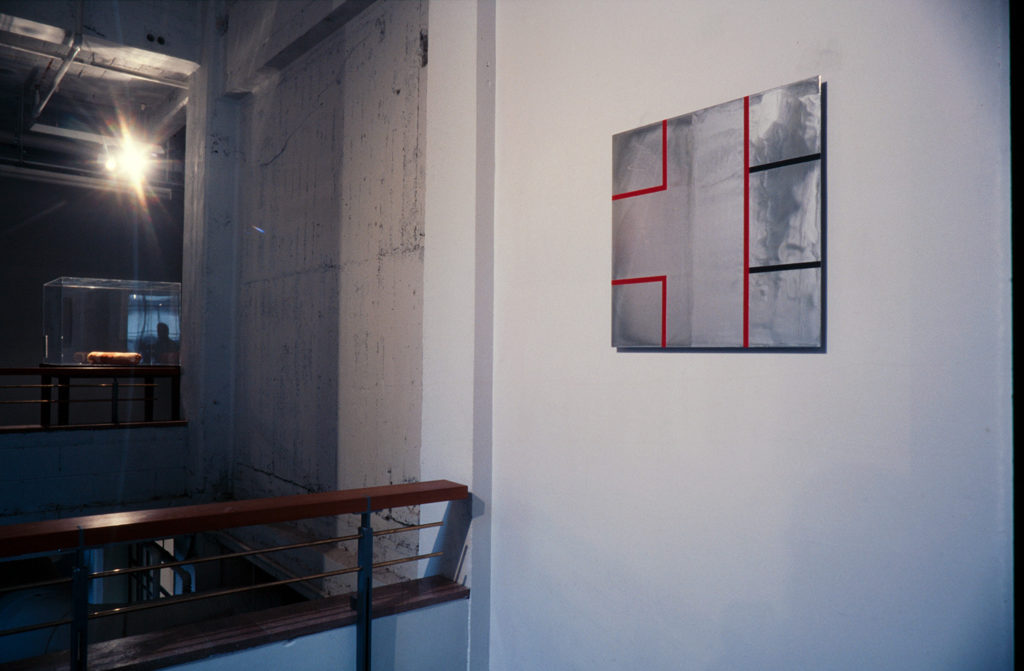CURATOR Wystan Curnow OTHER VENUES Auckland Art Gallery, 11 August–28 October 2001 PUBLICATION essays Wystan Curnow, Lara Strongman; interview Robert Leonard
Born in Christchurch in 1951, Stephen Bambury graduates from Elam School of Fine Arts in 1975. He is a committed abstractionist from day one. Works surveys twenty-five years of his painting, as it his develops from modernist formalism into postmodernist post-formalism (understanding abstraction as sign). In the Dominion, David Famularo observes, ‘there is a clear divide between the work completed between the early 1970s and late 1980s and what he has done since. Those two positions chart the split between the modernist and postmodernist eras.’
Bambury riffs on iconic shapes: the square, the circle, and, particularly, the cross. His works exploit ambiguity of reference. His forms can be read as Eastern or Western, religious or secular. Do his crosses refer to the Christian cross or to Kasmir Malevich’s suprematist cross—or are they undecided? Crosses stacked in sets of seven as ‘ladders’ suggest tantric chakras. ‘A key concern in my work is the dissolution of dualities, the reconciling of opposites’, Bambury says.
Bambury’s references are local and international. His works nod to Mondrian or Colin McCahon. He explains, ‘My work obviously speaks of this place, New Zealand, but it also speaks of somewhere else. I want to break down the thinking of here and there. We are international.’
Materiality is important. On a trip to New York in 1980, Bambury discovers that abstract paintings he assumed were smooth are, in fact, rough, with preparation and brushstrokes visible. If, at first glance, Bambury's later works seem crisp and orderly, closer inspection reveals measurements are askew. They make a feature of materials like gold, graphite, and lacquer, with bubbles clearly visible in his surfaces.
The show is curated by Wystan Curnow, who curated two previous City Gallery exhibitions: The World Over and Billy Apple: Good as Gold. Curnow says, Bambury is ‘making images of wonder, icons for the exercise of your contemplative thought.’ Curnow choses not to organise the survey chronologically. To enhance the possibilities of contemplation, the works are shown without labels. Visitors are instead provided with a map to the show. Bambury redesigns the space, adding extra walls and opening up windows, accentuating the experience of the show as a journey. ‘I use the allure of beauty of surface, colour, and space to provide a runway into the work’, says Bambury.
Bambury also makes a foray into sculpture. In Ngamotu, seven metal trays are arranged in Bambury’s seven-cross ladder motif. The cross areas are filled with oil; the surrounding squares with water. Although the surface is beautiful and sheer, oil seeps into the water areas, polluting them. The title is the Maori name for the New Plymouth beach where oil was first discovered in New Zealand.
In National Business Review, John Daly Peoples calls Bambury 'a supreme alchemist', whose ‘work can be seen to exist at the intersection between order and chaos’. Peter Simpson, in Sunday Star-Times says, ‘The purely aesthetic element in Bambury's work is always at an elevated level … Do anyone's scarlets squawk louder than Bambury’s? His creamy resinous surfaces make you want to lick them. His myriad yellows rinse the eye clean.’



















































































